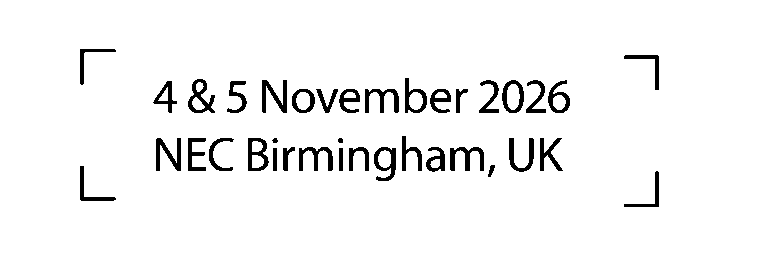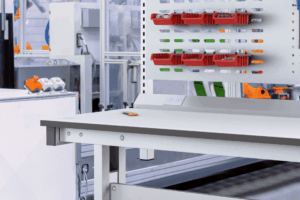London, June 2, 2025
A more connected Europe?
The 2025 UK-EU trade agreement marks one of the most significant updates in the post-Brexit landscape to date, with real consequences for engineers across the UK. Whether you’re designing low-carbon systems, working in heavy industry or developing next-gen defence technologies, the deal introduces both opportunities and challenges that will dictate how you work and who you work with. Here, Simon Farnfield, event director at leading manufacturing and engineering networking event, Advanced Engineering UK, which is set to return to the NEC, Birmingham, on October 29 and 30, explains what the deal means for engineers on the ground.
The agreement is being described as the most comprehensive reset of UK-EU relations since Brexit. It extends the status quo on fishing rights until 2038, removes most routine checks on food exports and lays the groundwork for deeper cooperation in defence, energy and even youth mobility.
For engineers, what does this mean? Well, the deal suggests a move away from drawn-out uncertainty toward a more connected and predictable working relationship with Europe — one that spans everything from carbon trading to cross-border infrastructure and innovation.
Linking Emissions Trading Schemes (ETS)
One of the standout elements of the new trade agreement is the planned linkage between the UK’s ETS and the EU’s Emissions Trading System (EU ETS). This is effectively creating a more unified carbon market, where allowances are recognised across both regions. For engineers working in carbon-intensive sectors — think manufacturing, construction and transport — this change should, in theory, make life simpler.
By aligning the UK’s framework with the EU’s, businesses no longer need to comply with two parallel systems, which means less administrative complexity and fewer regulatory headaches. Plus, there’s a major financial upside too, and that’s avoiding the EU’s Carbon Border Adjustment Mechanism (CBAM). This could save UK exporters, particularly those dealing in steel and cement, up to £800 million annually.
And perhaps most importantly, the creation of a single carbon price across both markets offers greater stability. That predictability makes it easier for engineers and their organisations to plan and invest in low-carbon technologies with confidence.
Steel industry protections
Elsewhere, steel remains a backbone of UK infrastructure and a vital part of the country’s engineering identity, so it’s no surprise the new trade deal gives the sector special attention. Under the agreement, British steel exports will continue to enjoy tariff-free access to the EU, crucially avoiding the new regulatory changes and trade barriers that had been looming on the horizon.
In addition to maintaining open market access, the deal also restores the UK’s country-specific steel quota to historic levels. That’s a big win for stability, giving steel producers and exporters more clarity around export volumes and helping them plan with greater certainty.
Together, these measures are designed to shore up the UK’s competitive standing within the broader European supply chain. For engineers working in or alongside the steel sector, the result should be a more stable and predictable operating environment — one where long-term projects and cross-border collaborations can proceed with greater confidence.
Regulatory alignment and compliance
Another key takeaway from the 2025 trade deal is the push for closer alignment between UK and EU regulations. While the UK retains the right to set its own rules, this agreement marks a shift towards a more coordinated approach, especially in areas where standards were previously harmonised before Brexit.
For engineers, this means adapting to evolving compliance frameworks. New reporting obligations and technical standards, those tied to emissions management and industrial sustainability, are likely to come into play. Whether you’re designing systems for energy efficiency or ensuring supply chain compliance, staying on top of these changes will be essential.
Simultaneously, this “dynamic alignment” has its benefits. Mirroring EU standards can smooth the path for trade and technical collaboration across borders. It reduces duplication, streamlines product development and opens the door for more seamless partnerships, especially in sectors where UK and EU engineers are already closely connected.
Broader opportunities for engineers
While emissions trading and steel protections have grabbed most of the headlines, the 2025 UK-EU trade deal has opened up fresh avenues for UK engineers to explore, in terms of mobility and cross-sector collaboration.
One of the more forward-looking proposals is the introduction of a youth mobility scheme. If implemented, it could make it far easier for young engineers to live, study and work across both the UK and EU. Beyond broadening horizons, this kind of freedom of movement encourages knowledge sharing, skill development and stronger professional ties between emerging talent on both sides of the Channel.
There’s also an opportunity emerging in defence. With the UK and EU set to deepen their cooperation in security and military matters, UK engineering firms may gain access to the EU’s €150 billion rearmament programme. That kind of investment brings the potential for major new projects, from advanced systems design to large-scale infrastructure development, which offers engineers exciting challenges and the chance to contribute to international initiatives at scale.
The 2025 UK-EU trade agreement is more than just a policy, it’s a recalibration of how UK engineers engage with Europe. From the integration of emissions trading systems to safeguards for steel and closer regulatory alignment, the deal offers a framework that could help engineering businesses remain competitive while opening doors to new collaborations and markets.
But with change comes the need to stay ahead. Engineers and industry leaders alike will need to remain agile, informed and ready to adapt as new regulations and opportunities unfold. One of the best ways to keep pace is by staying connected to the wider engineering community.
Subscribing to the Advanced Engineering newsletter is a simple way to stay on top of developments that matter. And of course, there’s no substitute for face-to-face collaboration. Advanced Engineering 2025 is taking place on 29–30 October at the NEC, Birmingham, so why not come along? Register and attend this year’s show, and meet suppliers and partners in person.







